
Wednesday 3 Oct - away, Etang Canal, BIRDS, windy, flytent, horses, Gallician
The wind had died down, so it was time to say bye to Frontignan and start to head across the remainder of the Etang.
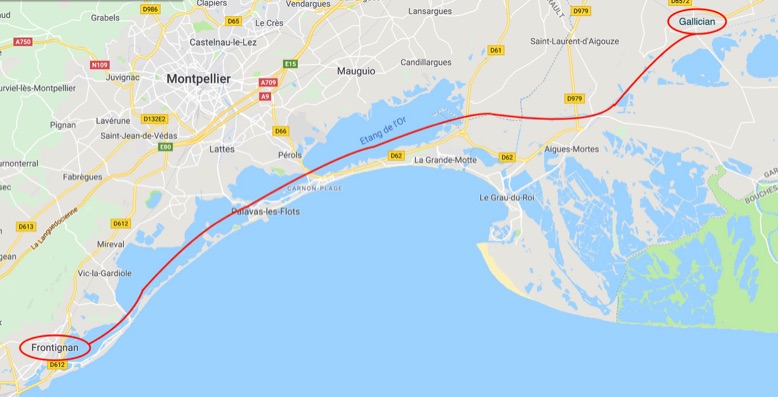
Frontignan has been a great mooring (apart from the noisy Germanic singers!). When we got here we bought four jetons, thinking that might give us enough electricity for a couple of days (e.g. at Villeton, one jeton gave 4 hours of electricity). However, leaving here after three nights, we are still running on the first jeton! And today I saw on the Info Board that one jeton gives 5kWh of electricity, which is about what we use per day in Taggerty. No wonder it lasted three nights on the barge. Now I’ve got three jetons left for when we come back on the return trip!
We were ready to get away at 0830h, having moved across the canal and temporarily moored using a single rope for front and back.

It’s 0831h, and away we go...
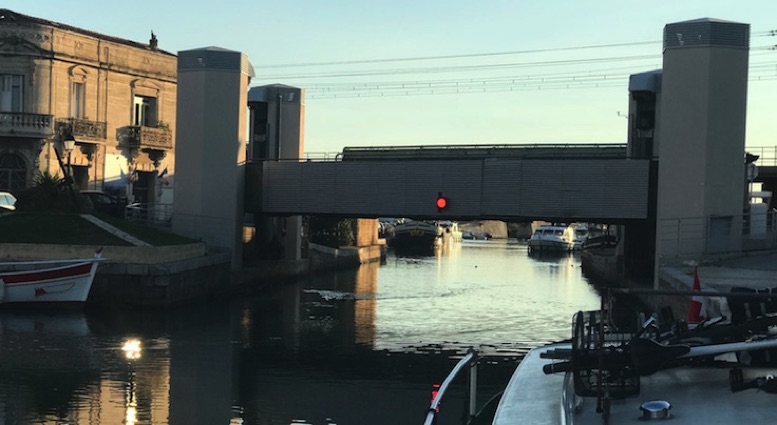
but first we have to wait for boats going downstream who have priority, including Tourmente and Sam the Man who we met up with at the Convivencia Concert last year.
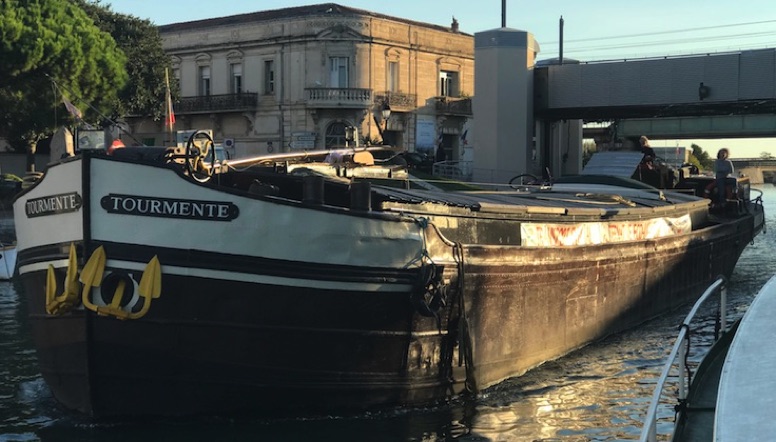
Once we left Frontignan, we were immediately out onto the canal through the Etang d’Ingril. I had always wondered what these canals would look like, and now I know. They are a canal built through the middle of a lake! The canal wall has gaps every now and then, so the canal and lake share the same salt water. We let a hire-boat pass us, so that we could cruise at our own pace, and paused to watch the many birds along the canal. I did some measurements and found that, when not pausing, we were doing 10kph at 1500rpm.

There were birds everywhere, so I took my time to capture some of them on film (or at least digitally!).
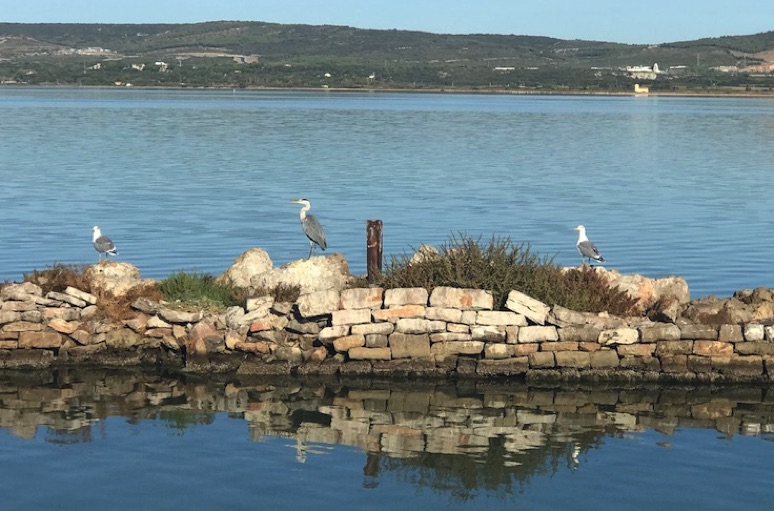
There were lots of grey herons and, as before, they tended to fly off as soon as the barge got level with them. But this is where the iPhone "live photos” feature came in handy. I would take the shot before or just after they had lifted off, and then the 1.5 seconds before and after the “click” would capture them stationary and in flight. I would then use the “edit” feature on the iPhone to pick the best shots within that 3-second window. I particularly liked the one in the middle below, which captured the heron and its shadow as it took flight.

Some birds we interrupted at lunchtime...
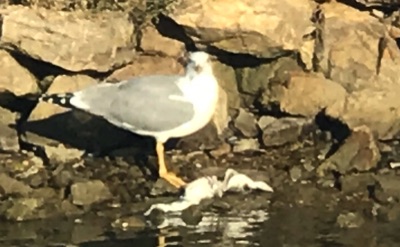
We came across a flock of flamingos west of Maguelone (PR57), and noted the presence of a 24h mooring right there, for when we come back the other way in the future. Will have to make sure I have a better camera with good zoom by then, to capture some close-up shots.
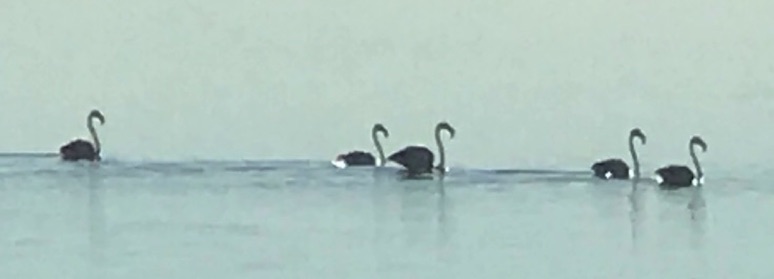

Having left the canal through the Etang, the next major feature, which could be seen for ages over the flat terrain leading up to it, was the river closure gates at Le Vidourle (PR27). Because the river was not in flood, the gates were open, but during floods the gates slide down, the canal is closed, and the river has its way.
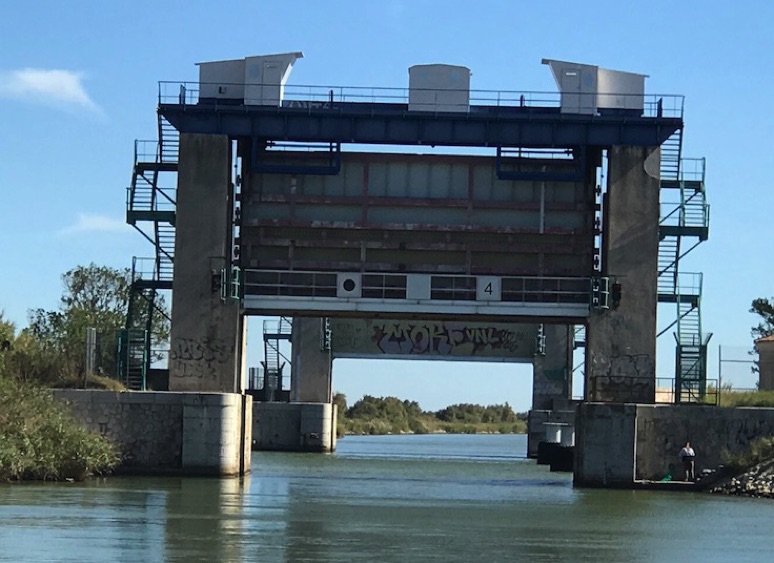
Soon thereafter, we reached the turnoff to Aigues Morte and it became very windy. I was just in the middle of complimenting myself for the design of the flytent over the dogbox and its ability to withstand the wind, when “whoosh”, it was gone! I looked around to see it floating in the canal, so I did a quick “man overboard” u-turn to try to retrieve it, but by the time we got back there, it had filled with water and sunk to the bottom of the canal. The photo below shows our nude dogbox, and the remains of the bungee cords that had previously held the flytent in place. Later examination showed that the design defect was using bungee cord hooks that were too big for the size of bungee cord, and the knot at the end of the cord had simply been pulled through the hook by the force of the wind. At least the wooden supports attached to the dogbox were still in place, and luckily the pole across the top of these supports had landed on the gunwhale and not gone overboard with the flytent.
I learned several lessons from this experience:
1. Don’t underestimate the force of the wind.
2. Use bungee hooks that are the correct size for the bungee cord.
3. Loop the bungee cord around the side rail, and put both hooks through the eyelet on the flytent.
4. Secure the pole to the timber supports.
5. Secure the flytent to the pole.
6. Use a belt and braces approach, and put straps over the flytent and tied to the side rails.
All of these things are now obvious in hindsight, and the most important lesson is number 1.
We will order another flytent from our supplier in Moissac, and do it right next time.

We continued on in a more sombre atmosphere, but our spirits were soon lifted after about a kilometre when we saw our first Camargue horses, with foal.
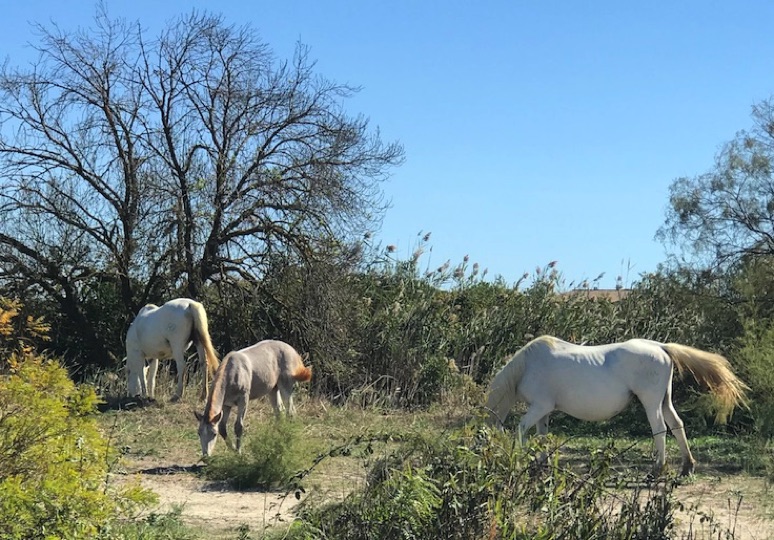
We continued on until PR13, when we decided to moor for the day at Gallician. We could have gone further, but were unsure whether we would find another suitable mooring before reaching the Petit Rhone, so we settled on the “bird in the hand”. It was also still windy, and we didn’t fancy going onto the rivers in the wind.
While I worked on the blog, Rita rode to a nearby Nature Reserve at Scamandre. When she returned a few hours later, she had two flat tyres (and had walked most of the way back). We attempted repairs, but found that our repair kit was slightly deficient in that we had run out of rubber glue!
So we settled for an on-board dinner and drinks, while contemplating a Camargue sunset.
